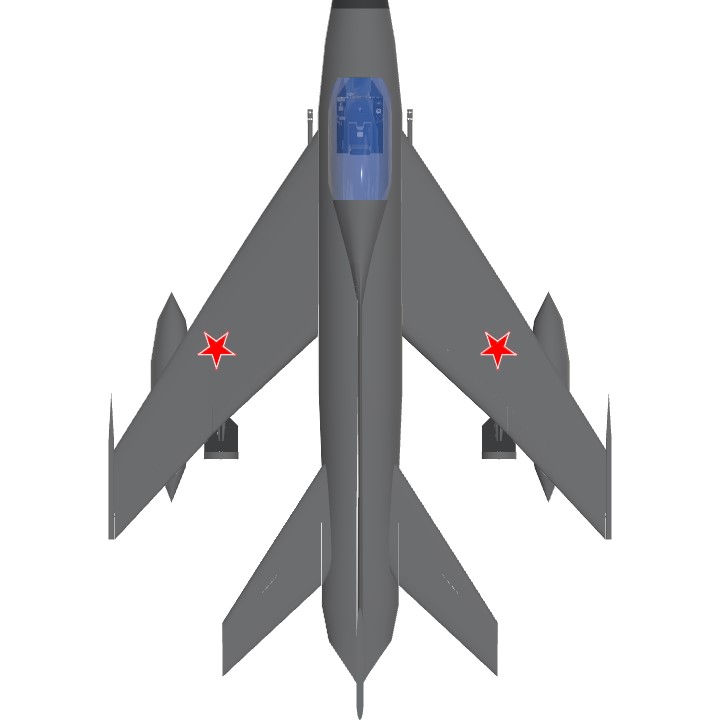???Ag1-2=Engines Ag3=FuelTank resetn In 1950 the Mikoyan-Gurevich (MiG) design bureau (also known as OKB-155) began work on a new fighter aircraft, intended to have a greater range than the existing MiG-15 and MiG-17 aircraft, and capable of reaching supersonic speeds in level flight. MiG chose to use two of the new Mikulin AM-5 axial jet engines (a scaled-down version of the Mikulin AM-3 that powered the Tupolev Tu-16 bomber) for its new fighter.[2][3] As a test bed for the new engine, OKB-155 was authorised on 20 April 1951 to convert one of the prototype MiG-17s, replacing the single Klimov VK-1 engine with two 19.60 kN (4,410 lbf) AM-5s (later replaced by 21.08 kN (4,740 lbf) AM-5As), with the testbed, designated SM-1 (or I-340), flying late in 1951.[2][4] While the SM-1 was a useful testbed,[3] its performance was less than expected, and first resulted in an afterburner being designed for the AM-5, resulting in the AM-5F (reaching 26.45 kN (5,950 lbf) with reheat).[5] While the SM-1 was a test bed, the SM-2 (or I-360) was intended as the required supersonic escort fighter, with work authorised on 10 August 1951. The SM-2 was a twin-engined, mid-winged aircraft. Its thin wings, which had been designed at TsAGI, the Soviet Central Aerohydrodynamic Institute, for supersonic flight were swept back at an angle of 55 degrees and had a single wing fence on each side. Unusually, a T-tail was fitted. Armament was two Nudelman N-37 37-mm cannon located in the leading edge of the aircraft's wings, near the wing roots - the guns had been moved compared to those in the MiG-15 and -17 to avoid ingestion of gun blast gases causing surging of the aircraft's engines.[3] The first SM-2, the SM-2/1 was sent to the Letno-Issledovatel'skiy Institut (en:flight research institute) (LII) in April 1952 for testing, and was flown for the first time on 24 May 1952, with test pilot G. A. Sedov at the aircraft's controls.[3][6] With the un-reheated AM-5A engines, the SM-2 could not
Specifications
General Characteristics
- Created On Windows
- Wingspan 29.3ft (8.9m)
- Length 42.0ft (12.8m)
- Height 12.7ft (3.9m)
- Empty Weight 1,734lbs (786kg)
- Loaded Weight 6,498lbs (2,947kg)
Performance
- Power/Weight Ratio 16.6
- Wing Loading 14.7lbs/ft2 (71.6kg/m2)
- Wing Area 443.3ft2 (41.2m2)
- Drag Points 6457
Parts
- Number of Parts 256
- Control Surfaces 0
- Performance Cost 1,181






